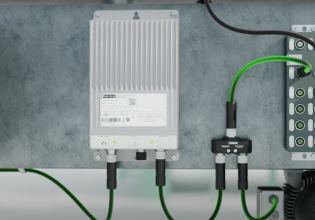J
Hi,
I'm beginner in control systems area and I have a question regarding that. First let's take a look at the big picture of the control system and then I will state the actual problem.
There is a plastic tube, vertically placed in a space. At the bottom of the tube we have a fan (ventilator) and at the top, there is a ultrasound sensor. In the tube there is a light ball, which position is controlled by the fan and the position is measured by ultrasound sensor.
The task of control system is, to provide a control for controlling the position of a ball.
-Fan is controlled by pulse control (logical high turns it on, logical low turns it off)
-Sensor's output is in a range from 0 to 32643
The actual problem is that I have no idea how to set up the input parameters of PID controller that it output a number from 0 to 100 (%), which is a duty cycle needed for Signal gen input. I mean, PID controller operates with sensor output values (0 to 32643), so it's result will be also a sensor value and I can not see how to convert this to duty cycle. For instance, what value of PID output represents a 100% of duty cycle?
Control system:
http://img822.imageshack.us/img822/1475/pidcontrol.jpg
I'm beginner in control systems area and I have a question regarding that. First let's take a look at the big picture of the control system and then I will state the actual problem.
There is a plastic tube, vertically placed in a space. At the bottom of the tube we have a fan (ventilator) and at the top, there is a ultrasound sensor. In the tube there is a light ball, which position is controlled by the fan and the position is measured by ultrasound sensor.
The task of control system is, to provide a control for controlling the position of a ball.
-Fan is controlled by pulse control (logical high turns it on, logical low turns it off)
-Sensor's output is in a range from 0 to 32643
The actual problem is that I have no idea how to set up the input parameters of PID controller that it output a number from 0 to 100 (%), which is a duty cycle needed for Signal gen input. I mean, PID controller operates with sensor output values (0 to 32643), so it's result will be also a sensor value and I can not see how to convert this to duty cycle. For instance, what value of PID output represents a 100% of duty cycle?
Control system:
http://img822.imageshack.us/img822/1475/pidcontrol.jpg






